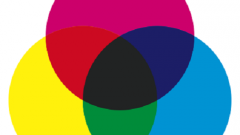You will need
- Red, blue and white paint, paper, paintbrush, palette, water, directory shades
Instruction
1
Take some red paint and place it on the palette. Wash the brush, take the same blue paint and add it to red. Mix the paint. You turned a dark purple color. Draw this color on the sheet.
2
Experiment a little with different compositions. For example, take 2 parts red paint to 1 part blue, or Vice versa. Let's see what happens. Purple color has many shades and they are achieved by different proportions of red and blue colors.
3
Once you learn how to get the purple color, try to get purple. It is lighter than purple, and this means that the palette can be obtained by adding white paint. Take your favorite purple paint and add some amount of white. But if white add a little bit more?
4
You can go the other way. First, lighten the blue or red paint by adding white. Get blue and pink, their hue depends on the proportions of red and white, blue and white colors. Mix the paint. Get the lilac color.
5
More accurate proportions of the colors you can get if you take the catalog colors, for example, NCS. Such directories usually have companies that produce paint. Look for your favorite color and how much paint you need to take to get it.
Useful advice
Paint can be anything, but for a school experiment, it is best to take gouache;
As a palette you can use a piece of plywood or PVC tiles;
The lilac color you can get on the computer. In the RGB system the color purple is exactly the same as on a normal palette by adding blue color to red or Vice versa. After that, it is necessary to increase the overall brightness to get it the color purple. The RGB model defines a color that we see on the monitor. But there is another option in the CMYK system. It uses a different method – no colour mixing, and tsvetovatyy when the base RGB colors are subtracted from white. This principle is based on absorption of a particular paint one of the components of the beam white. For example, the blue dye from the white beam absorbs the red component and Vice versa.
As a palette you can use a piece of plywood or PVC tiles;
The lilac color you can get on the computer. In the RGB system the color purple is exactly the same as on a normal palette by adding blue color to red or Vice versa. After that, it is necessary to increase the overall brightness to get it the color purple. The RGB model defines a color that we see on the monitor. But there is another option in the CMYK system. It uses a different method – no colour mixing, and tsvetovatyy when the base RGB colors are subtracted from white. This principle is based on absorption of a particular paint one of the components of the beam white. For example, the blue dye from the white beam absorbs the red component and Vice versa.




